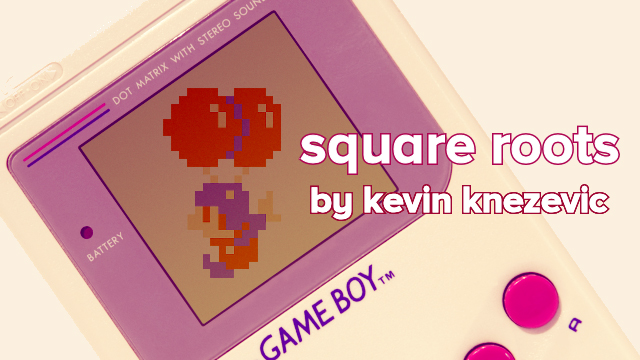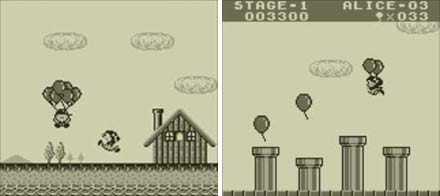
Despite having owned an NES as a kid, I didn’t get my first taste of Balloon Fight until some 18 years after it was released, when I inadvertently discovered the game in Animal Crossing. Like the other 8-bit classics featured in that title, Balloon Fight was a decidedly simple affair, with easy-to-grasp mechanics that lent themselves well to quick play sessions. It was also surprisingly addictive; I often found myself returning to the game whenever I needed a brief respite from landscaping or running errands, and it quickly became one of my favorite reasons to visit my town.
As fun as the game was, however, I couldn’t help but notice it was a relic of the past. Beyond the odd cameo in other Nintendo titles (most notably a quasi-resurrection in WarioWare: Smooth Moves), it seemed as though the Balloon Fight gameplay lived and died with the original, as was the case with so many other games of the time (Clu Clu Land, Ice Climber, etcetera). It was only recently that I discovered a sequel to the game had been made for the Game Boy, and that it was currently available in digital form on Nintendo’s Virtual Console service. My curiosity sufficiently piqued, I fired up my 3DS and hit the eShop.
What struck me most about Balloon Kid was not its quaint visuals or its charming premise, but how much it reminded me of Super Mario Bros. This may sound like an odd thing to say considering the two bear very little resemblance to one another (besides the fact that heroine Alice can release her balloons and take to the ground, platformer-style, but even then the game’s jumping physics feel significantly different from those that govern Mario’s world). No, the connection I drew between the titles was more spiritual than mechanical; just as Super Mario Bros. took the gameplay of its arcade forbear and repurposed it into a full-fledged adventure, so, too, did Balloon Kid build upon the foundation laid down by the original Balloon Fight. Each level was a variation on the Balloon Trip template, a leftward-scrolling flight through increasingly devious combinations of enemies and obstacles. Players were still charged with collecting as many balloons as they can, but rather than forming the crux of your mission, this goal took a backseat to the game’s true objective: finding your lost brother (who had humorously drifted away on his own balloons at the start of the game).
I was also surprised to see just how difficult Balloon Kid was. The adventure starts off pleasantly enough, easing you into the gameplay with its wide-open areas and innocuous enemies, but it quickly adds new elements to the mix with each successive level you complete. Soon you’ll have to contend with icy surfaces and spike-laden platforms, and by the time you reach the final stage– an industrial complex littered with electrical sparks and hazardous machinery– you’ll be spending just as much time dodging obstacles on foot as you will in the air.
Still, that difficulty went a long way in offsetting Balloon Kid’s short length (there are only about eight stages total in the entire game), and the innovations that it brought to the Balloon Fight mold helped impart the gameplay with some much-needed depth. Just as in the first title, Alice begins the game with two balloons tied to her back for conveyance. Losing both will send her plummeting to earth below, but unlike the Balloon Fighters of old, if she is able to find some solid patch of ground to land on (provided she doesn’t get forced-scrolled into the ocean or some other equally-murderous abyss), she can inflate a new pair and take to the skies once more. She can also manually release her balloons in mid-flight with a press of the B button, allowing her to run and jump her way through portions of the level.
It was this last ability in particular that had the biggest influence on the title, as it opened up countless new gameplay opportunities for the developers to explore. Releasing your balloons was woven into the very fabric of the level design; nearly every stage forced Alice to abandon them in order to fit through narrow passageways, and some featured extended platforming sections that were too cramped to navigate by air. Even the bosses required her to drop to the surface to engage them in hand-to-hand (or foot-to-head) combat, reinforcing its importance to the underlying game structure.

Of course, Balloon Kid’s strengths weren’t limited to just its gameplay; it also featured a charming and detailed setting (which was all the more impressive considering that many developers were still wrestling with the Game Boy’s limitations at the time of its release). Like the Mushroom Kingdom before it, Balloon Kid’s Pencilvania was a quaint and varied world, with expansive levels to explore and hidden secrets (in the form of bonus stages) to discover. It was also surprisingly expressive in its design, capturing the look and feel of a cartoon in its backdrops. This was best exemplified by the game’s second stage: a dense woodland. It begins like any typical cartoony forest, with a row of happy trees lining the horizon, but as you make your way deeper and deeper into the heart of the level, you’ll notice their expressions change from welcoming smiles to ominous glares. It was little touches like this that helped bring the adventure to life, giving Balloon Kid a sense of personality that the original Balloon Fight, with its static arenas and murky backdrops, didn’t have.
More importantly, Balloon Kid represents an era when Nintendo was more willing to experiment with its designs, taking proven game concepts and exploring various new permutations of them. While this made for a compelling twist on the Balloon Fight gameplay, it seems the rest of the world didn’t quite agree with its direction, as the series has lain largely dormant since then (Tingle’s brief stint as a Balloon Fighter notwithstanding). Still, that doesn’t make Balloon Kid any less of a success, and its availability on the eShop has given the game a second chance at finding an audience. It may not have the same historical significance as its predecessor, but it’s still a (balloon) trip worth taking.




 ShareThis
ShareThis







I loved BF & also discovered it in KI. Never played the GB one. Will have too. I think this is a franchise Nintendo needs to revisit.
I wholeheartedly agree. I actually got really excited when I heard Balloon Fight was one of the ambassador games! I hope to see it return some day, even if only in downloadable form. OOH, or as a Smash Bros fighter, heheheheeeeeeh.
Well it seems the Balloon Fighter was originally considered for Smash Bros. Melee, but he was replaced by the Ice Climbers. Still, that doesn’t mean he can’t appear in the next one!
That would be amazing. Both franchises should come back Even if it’s just on eshop.